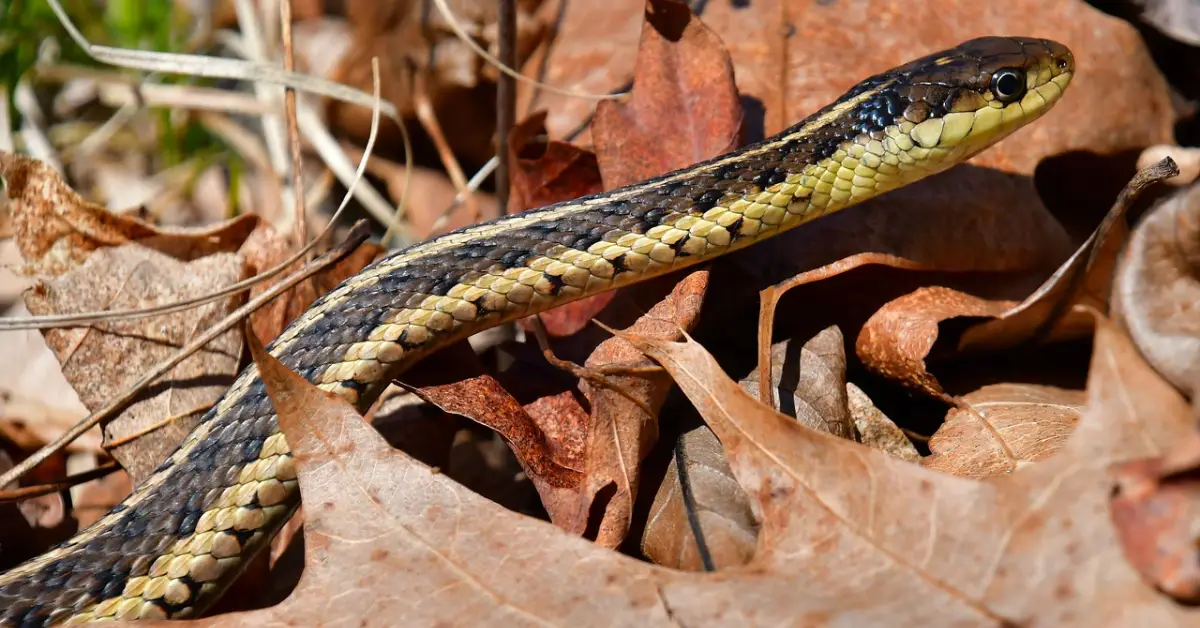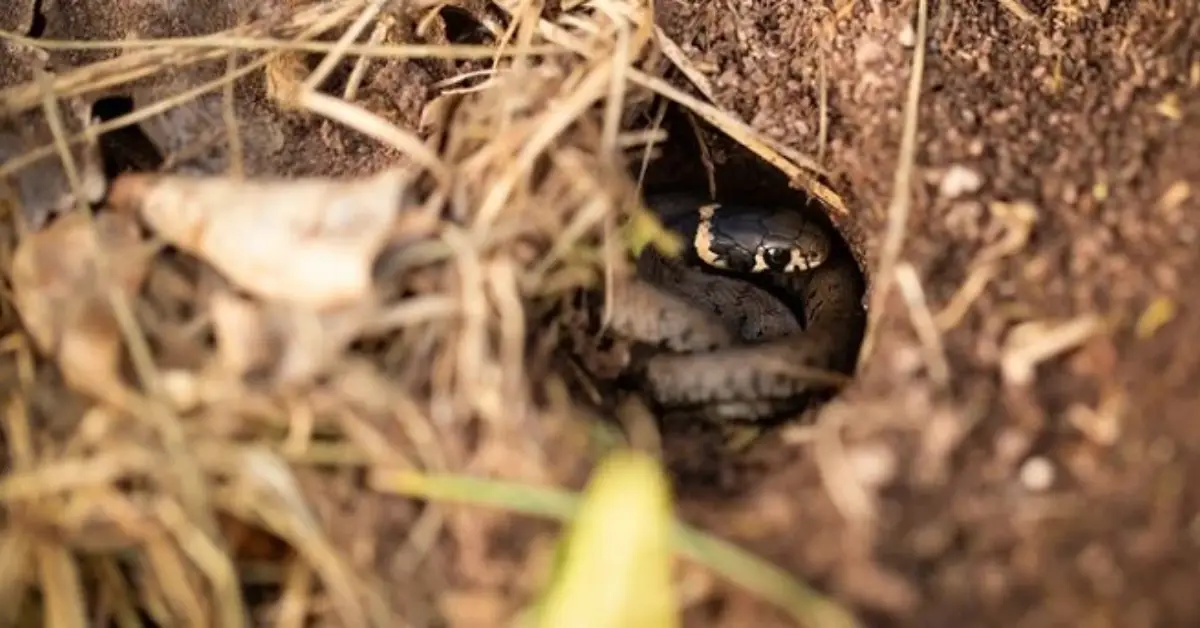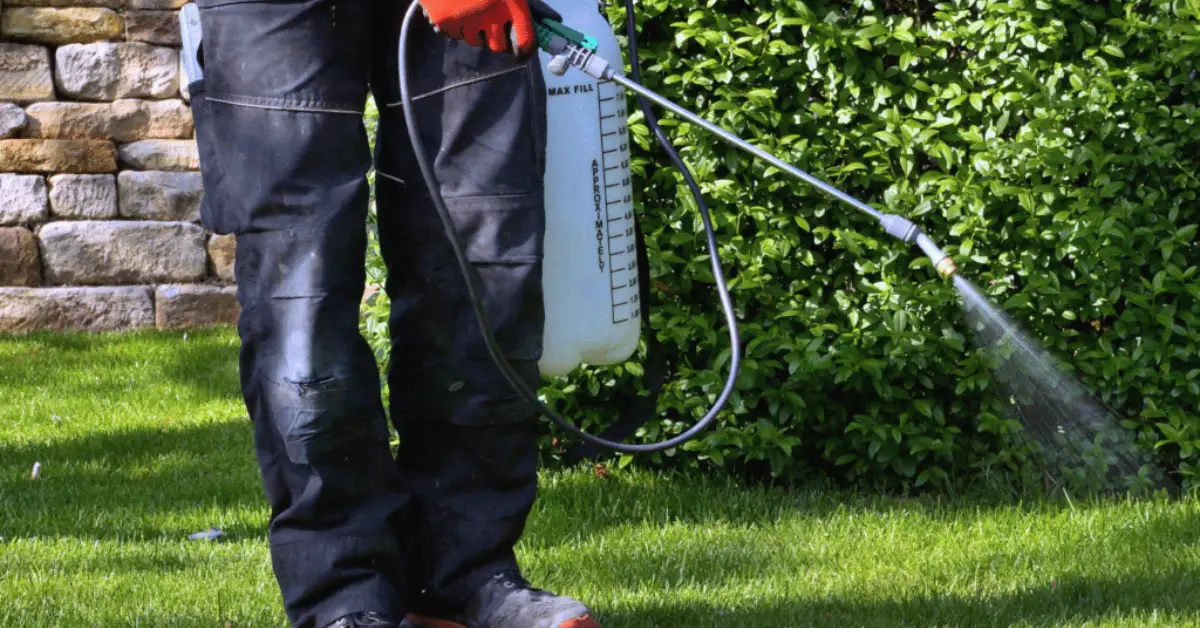Is That a Snake Hole? 5 Simple Tricks to Identify and Seal It
I still remember the first time I spotted a strange little hole near my backyard fence. It looked harmless—just a clean, round opening about the size of a golf ball—but something about it didn’t feel right. A few days later, my dog refused to go near that spot. That’s when I realized it might be a snake hole.
If you’ve ever had that uneasy feeling seeing small holes in your yard, you’re not alone. Most homeowners don’t think twice about them until they notice more appearing, or worse, spot movement nearby. The truth is, snakes don’t usually dig their own burrows—they move into existing ones left by rodents or moles. That makes it easy to miss the signs until they’re already there.
Knowing how to identify snake holes early can save you a lot of stress, especially if you have kids or pets playing outside. In this guide, I’ll walk you through the 5 clear warning signs that a snake might be using your yard as shelter—and how to fix the problem fast, safely, and without tearing up your garden.
Have you ever found mysterious holes in your yard and wondered what’s living inside? Let’s figure that out together.
Why You Might See Holes in Your Yard (and What They Really Mean)
If you’ve noticed small holes popping up around your yard, it’s easy to jump straight to one thought — snakes. I get it. That little dark circle in the grass can send your imagination running. But here’s the truth: most of the time, those holes weren’t made by snakes at all.
Let’s slow down and look at what’s really happening beneath the surface — and why it’s worth understanding before you panic or start filling everything with dirt.
Snakes Don’t Usually Dig: What’s Really Happening
Snakes are opportunists, not builders. They don’t have the claws or strength to dig through soil like moles or chipmunks do. Instead, they move into abandoned burrows left behind by other small animals.
That means the hole you’re seeing could have originally belonged to:
- Rodents or voles, which create networks of tunnels underground.
- Moles, who leave raised soil ridges or soft spots in your lawn.
- Insects or ground-dwelling bees, which sometimes create tiny single-entry holes.
Once these creatures leave (or get eaten), a snake may slide right in and make it home. According to The Spruce, snakes often reuse rodent burrows because they provide the perfect mix of shelter, warmth, and protection from predators.
So before you grab a shovel or call pest control, it’s worth figuring out who made the hole first. The difference between a rodent burrow and a snake shelter can save you time—and unnecessary worry.
What Attracts Snakes (and Their “Holes”) to a Yard

If a snake has decided to stick around, your yard might be offering it a little too much comfort. Think of it from a snake’s perspective—quiet corners, plenty of hiding spots, and an easy food supply make a perfect invitation.
Here’s what usually attracts them:
- Rodents and insects: Snakes follow food. If you have mice, rats, or crickets, you’re basically setting the dinner table.
- Shelter and shade: Piles of wood, tall grass, debris, or rock borders give them safe cover to rest.
- Moisture and water sources: Leaky sprinklers, birdbaths, or low spots with standing water help cool them down in hot weather.
- Foundation gaps and crawl spaces: These create dark, stable environments where snakes feel protected.
If your yard checks any of these boxes, it’s not just a snake problem — it’s an ecosystem issue that starts with maintenance. Clearing clutter, sealing entry points, and managing pests go a long way in keeping unwanted guests away. If you want to go a step further, check out our guide on 7 Ways to Prevent Snakes from Making Your Yard Their Home — it walks you through simple landscaping and maintenance tricks that keep snakes away for good.
When you understand why snakes show up, fixing the problem becomes less about fear — and more about creating a balanced, well-kept outdoor space you actually feel safe in.
5 Warning Signs to Identify a Snake Hole
Once you’ve ruled out the obvious garden critters, it’s time to look closer. Snake holes have certain visual and environmental clues that make them different from mole tunnels or insect nests. If you spot even a few of these signs, it’s worth taking a second look before mowing or poking around.
Let’s go through the five warning signs every homeowner should know.
Sign 1: Size & Shape of the Hole (1″–3″ Typical, Circular/Smooth)
Start with the basics—size and shape. Snake holes are usually round, smooth-edged openings that range between one to three inches wide. They don’t have the jagged, uneven borders you see with rodents or insects.
If you notice a clean, almost symmetrical hole that looks like something “slid” through rather than dug through, that’s a subtle but telling clue. The edges tend to look compacted or polished, not crumbly.
That’s because snakes move in and out without disturbing the soil, leaving it tight and clean.
Sign 2: Clean Edges, No Disturbed Soil or Fresh Mounds
A fresh mound of dirt is your first clue it’s not a snake. Creatures like moles or gophers push soil upward as they dig, creating small volcano-shaped piles. Snakes, on the other hand, don’t dig at all—so you won’t find any freshly turned dirt nearby.
If you see a hole with no surrounding mess, that’s when your curiosity should kick in. It means the opening was likely created by something else but quietly taken over by a snake looking for shelter.
Sign 3: Nearby Indicators – Shed Skin, Droppings, Drag Marks
Now we’re getting into the evidence that’s hard to ignore. If a snake has been around, it leaves small but telling signs behind.
Here’s what to check for:
- Shed skin: You might find a papery, translucent layer near the hole or in the grass. Snakes shed as they grow, often near their shelters.
- Droppings: They look similar to bird droppings but usually contain small bits of hair or bone.
- Drag marks: Smooth, wavy lines through dust or mulch indicate a snake slid through recently.
According to Varment Guard, these surrounding clues are often more reliable than the hole itself—especially since other animals may create similar openings.
If you see even two of these indicators together, assume it’s active and proceed carefully.
Sign 4: Location Clues – Near Woodpiles, Foundations, Dense Vegetation, Moisture
Snakes love quiet, hidden corners—the kind of spots you probably don’t check often. Look for holes near:
- Woodpiles or rock stacks, where they can hide and hunt rodents.
- Home foundations or crawl spaces, offering warmth and shelter.
- Tall grass or garden beds, especially with thick mulch.
- Areas with moisture, like under garden hoses, AC units, or leaky sprinklers.
If you notice a combination of shade, moisture, and stillness, that’s prime snake territory. These areas not only give them safety but also easy access to prey.
Sign 5: Presence of Prey or Rodent Activity Around the Hole
Where there’s food, there’s a hunter—and in this case, that hunter could be a snake. If you’ve spotted tiny burrows, mouse droppings, or gnawed garden produce, it’s likely that snakes are nearby, following the trail.
This is one of the most overlooked signs homeowners miss. Snakes rarely appear out of nowhere; they’re part of a chain reaction. If your yard is attracting rodents, it’s unintentionally attracting snakes too. Rodents are often the real reason snakes show up. If you’ve noticed chewed wires, droppings, or scratching noises, read 6 Sneaky Signs You Have Mice (and How to Stop Them Fast) to get rid of the problem before it spreads.
The good news? Fix the rodent issue, and you often fix the snake issue. Keeping your property tidy, sealing garbage bins, and trimming overgrown plants can make your yard a lot less interesting to both.
When you start connecting these dots—shape, soil, signs, surroundings, and food sources—you’ll see the pattern quickly. A hole on its own isn’t scary, but a cluster of these signs means it’s time to stay cautious and plan your next steps.
Quick Fixes: How to Secure the Hole Immediately

When you spot a possible snake hole in your yard, it’s natural to want it gone right away. But before you do anything rash, take a breath — you can secure your space quickly and safely with the right approach. This is about staying calm, taking smart action, and making sure the problem doesn’t return.
Step A: Fill or Block the Hole Safely (Materials & Methods)
Before you grab a shovel, pause for a moment. The key is to make sure you’re not trapping a snake inside. Observe quietly from a safe distance — if there’s no movement or tracks, you can go ahead and fill it.
Here’s how to do it properly:
- Use gravel or coarse sand for small holes; it discourages re-entry and allows drainage.
- For larger burrows, mix soil with small stones, then tamp it down firmly to close gaps.
- Cover the area with hardware cloth or mesh, then layer soil over it for extra protection.
- Near foundations or sheds, inspect for cracks or openings and seal them up after filling.
Avoid using harsh chemicals or snake repellents — they rarely work and can harm your soil or plants. Instead, the goal is to make the hole uninviting and hard to reuse.
Step B: Clean Up the Surrounding Environment (Remove Shelter & Food Sources)
Closing a hole is just step one. Snakes come and go because your yard gives them what they need — cover, food, and comfort. Removing those attractants is what keeps them from returning.
Do a quick cleanup checklist:
- Trim tall grass and overgrown plants so snakes can’t move unseen.
- Clear piles of wood, leaves, or rocks where they might hide or nest.
- Fix leaks and remove standing water, especially around sprinklers or AC units.
- Secure trash bins and pet food to stop attracting rodents — snakes’ favorite prey.
- Rotate compost piles occasionally to prevent burrowing animals.
While you’re clearing outdoor clutter, don’t forget the kitchen — pests often start indoors first. Here’s a helpful read on 8 Ways You’re Accidentally Attracting Ants in Your Kitchen to keep your whole home pest-free.
According to Critter Control, snakes often choose yards with easy hiding spots and a ready food supply. By removing both, you cut off the reason for them to stay.
Step C: Monitor & Follow Up (When to Call a Pro)
Even after you’ve filled holes and cleaned up, it’s smart to keep watch for the next few weeks. Look for fresh holes, shed skin, or new tracks — these could mean something’s still around.
You should call a wildlife control professional if:
- Holes reopen or new ones appear near the same area.
- You see a snake repeatedly around your home or porch.
- You suspect a venomous snake or can’t identify the species.
Professionals have tools and experience to inspect burrows safely and relocate snakes without harm — to you or the environment.
Longer-Term Prevention: Yard Maintenance & Safety Best Practices
Once you’ve handled the immediate issue, long-term prevention keeps your yard snake-free without constant worry. Think of it as regular upkeep — small habits that make a big difference.
Keep Grass Trimmed + Clear Wood/Rock Piles
Snakes prefer cool, shaded areas where they can move unseen. Keeping your lawn trimmed below four inches limits their cover. Clear away wood stacks, unused boards, and rock piles — these are natural shelters that invite trouble.
If you enjoy rustic landscaping, keep decorative rocks or mulch at least a few feet from walls and entryways. The more open your yard looks, the less appealing it is for snakes.
Seal Gaps Under Sheds/Foundations + Manage Moisture
Check under sheds, decks, and foundations — even small cracks can become easy entry points. Use steel mesh, caulk, or expanding foam to close them.
Managing moisture is just as important:
- Redirect gutters and fix pooling areas.
- Store firewood off the ground on metal racks.
- Ensure sprinklers don’t oversaturate soil near walls or patios.
A dry, well-drained yard naturally discourages both rodents and snakes from settling in.
Consider Native Context: What Types of Snakes You Might Face in Your Region
Every region has its own common species. Understanding which ones live near you helps you stay realistic about risk and response.
In much of India, for instance, rat snakes and keelbacks are common and harmless, while cobras or vipers need professional handling. The same logic applies globally—know your local wildlife so you can react appropriately without panic.
If you’re unsure which species are native to your area, check with a local wildlife department or environmental agency. Awareness is your best defense—and it helps you keep your outdoor space both safe and balanced.
When You Should Call a Wildlife or Pest Professional

Sometimes, despite your best efforts, a situation calls for expert hands. You’ve filled the holes, cleaned up the yard, and taken every preventive step — but something still feels off. That’s when it’s time to call a wildlife or pest control professional. Knowing when to step back isn’t a sign of failure; it’s how you keep your home safe.
Signs of Venomous Species or Large Snake Presence
If you’ve spotted a large snake or suspect it could be venomous, don’t try to handle it yourself. Even experienced homeowners can misidentify harmless species.
Call a professional immediately if you notice:
- A thick-bodied snake with a triangular head or slit-like eyes (common signs of venomous species).
- Hissing, coiling, or defensive posture when approached.
- Snakes frequently seen near porches, garages, or entry points.
- Evidence of a large shed skin — longer than three feet.
Professionals have the right gear, training, and permits to remove snakes safely and release them without harm. Trying to do it yourself can lead to unnecessary injury or panic.
Persistent Holes, Repeated Intrusion, or Rodent Infestation Behind It
If holes keep reappearing after you’ve filled them, or you keep spotting droppings and drag marks, it’s a clear sign there’s more going on underground. In most cases, this means your rodent population hasn’t been handled — and where there are rodents, snakes will follow.
Call a professional if:
- You’ve filled holes multiple times, but they return within days.
- You hear movement or rustling sounds beneath sheds or decks.
- Your yard has visible signs of rodent nests or droppings.
A licensed pest or wildlife expert can inspect your property, locate hidden nests, and apply long-term solutions that go beyond surface fixes.
Mistakes to Avoid (and What Happens if You Don’t Act)
Even small oversights can invite bigger problems later. When it comes to snake holes, here are the three common mistakes homeowners make — and why they cost you time and peace of mind.
- Filling holes without addressing what caused them → The hole will reopen because rodents or snakes find another way in.
- Ignoring small holes because “they’re harmless” → Those tiny gaps often expand into active burrows and lead snakes closer to your home.
- Using harsh chemicals or store-bought repellents → Most don’t work and can damage your garden or groundwater.
The takeaway? Focus on fixing the cause, not just the symptom. A well-maintained yard is your best long-term protection.
Have you ever dealt with mysterious holes in your yard? Share what worked (or didn’t) for you in the comments — your experience might help another homeowner figure it out faster.
And for more practical home care tips like this, visit Build Like New — where we make maintaining your home simpler, safer, and smarter every day.
Your 5-Point Action Checklist
Before you close this tab, here’s a quick recap you can save or print. It’s your at-a-glance guide to spotting and fixing snake holes safely:
- Identify the hole — Check the size and shape (1–3 inches, clean edges).
- Look for signs — Shed skin, droppings, or drag marks nearby.
- Block or fill it safely — Use gravel, mesh, or soil mix; no chemicals.
- Clean the yard — Trim grass, remove piles, and seal foundation gaps.
- Monitor and call a pro if needed — Don’t ignore recurring holes or sightings.
Taking small, steady actions today protects your home tomorrow. Stay alert, keep your outdoor spaces tidy, and you’ll enjoy a safer, calmer yard — snake-free and built to last, just like your peace of mind.
Disclaimer: This article is for informational purposes only and should not replace professional wildlife or pest control advice. If you suspect a venomous snake or ongoing infestation, always contact a licensed expert for safe inspection and removal.


